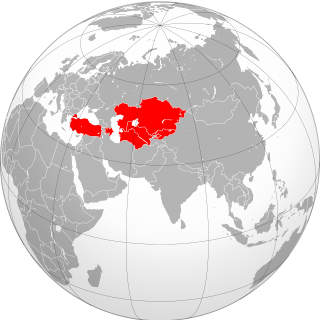 W
WThe following is a list of dynasties, states or empires which are Turkic-speaking, of Turkic origins, or both. There are currently six recognised Turkic sovereign states. Additionally, there are six federal subjects of Russia in which a Turkic language is a majority, and five where Turkic languages are the minority, and also Crimea, a disputed territory between Ukraine and Russia where Turkic languages are the indigenous minority. There have been numerous Turkic confederations, dynasties, and empires throughout history across Eurasia.
 W
WThe Afsharid dynasty was an Iranian dynasty that originated from the Turkoman Afshar tribe in Iran's north-eastern province of Khorasan, ruling Iran (Persia) in the mid-eighteenth century. The dynasty was founded in 1736 by the brilliant military commander Nader Shah, who deposed the last member of the Safavid dynasty and proclaimed himself as the Shah of Iran.
 W
WThe Ahmadilis, also known as the Atabegs of Maragheh, were a local dynasty who ruled from the early 12th century until 1208–09 in Maragheh itself and in Rūʾīn Dez for some years after the Mongol conquest. They ruled approximately from 1122 to 1220.
 W
WAnatolian beyliks were small principalities in Anatolia governed by Beys, the first of which were founded at the end of the 11th century. A second more extensive period of foundations took place as a result of the decline of the Seljuq Sultanate of Rûm in the second half of the 13th century.
 W
WThe Ashina, also known as Asen, Asena, or Açina, were a tribe and the ruling dynasty of the ancient Turkic peoples. It rose to prominence in the mid-6th century when the leader, Bumin Qaghan, revolted against the Rouran Khaganate. The two main branches of the family, one descended from Bumin and the other from his brother Istämi, ruled over the eastern and western parts of the Göktürk confederation, respectively.
 W
WThe Khanate of Astrakhan, also referred to as the Xacitarxan Khanate, was a Tatar state that arose during the break-up of the Golden Horde. The Khanate existed in the 15th and 16th centuries in the area adjacent to the mouth of the Volga river, around the modern city of Astrakhan. Its khans claimed patrilineal descent from Toqa Temür, the thirteenth son of Jochi and grandson of Genghis Khan.
 W
WThe Bahri dynasty or Bahriyya Mamluks was a Mamluk dynasty of mostly Cuman-Kipchak Turkic origin that ruled the Egyptian Mamluk Sultanate from 1250 to 1382. They followed the Ayyubid dynasty, and were succeeded by a second Mamluk dynasty, the Burji dynasty.
 W
WThe Basarabs were a family which had an important role in the establishing of the Principality of Wallachia, giving the country its first line of Princes, one closely related with the Mușatin rulers of Moldavia. Its status as a dynasty is rendered problematic by the official elective system, which implied that male members of the same family, including illegitimate offspring, were chosen to rule by a council of boyars. After the rule of Alexandru I Aldea, the house was split by the conflict between the Dănești and the Drăculești, both of which claimed legitimacy. Several late rulers of the Craiovești claimed direct descent from the House after its eventual demise, including Neagoe Basarab, Matei Basarab, Constantin Șerban, Șerban Cantacuzino, and Constantin Brâncoveanu.
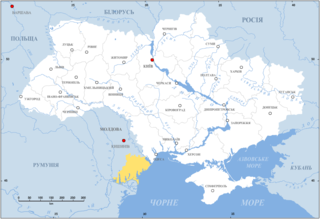 W
WBudzhak Horde or Belgorod Horde was part of the Nogai Horde between the 17th century and the 18th century that was settled in the Northern Black Sea coast under protectorate of the Crimean Khanate and the Ottoman Empire, Sanjak of Ozu (Yedisan). Its capital was in Căușeni.
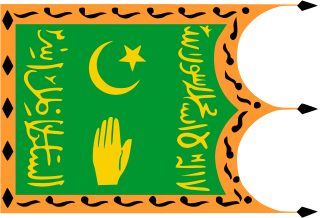 W
WThe Emirate of Bukhara was a Central Asian polity that existed from 1785 to 1920 in what is now modern-day Uzbekistan and Tajikistan. It occupied the land between the Amu Darya and Syr Darya rivers, known formerly as Transoxiana. Its core territory was the land along the lower Zarafshan River, and its urban centres were the ancient cities of Samarkand and the emirate's capital, Bukhara. It was contemporaneous with the Khanate of Khiva to the west, in Khwarezm, and the Khanate of Kokand to the east, in Fergana.
 W
WThe Burid dynasty was a dynasty of Turkish origin which ruled over the Emirate of Damascus in the early 12th century.
 W
WThe Crimean Khanate, own name — Great Horde and Desht-i Kipchak, in old European historiography and geography — Little Tartary was a Crimean Tatar state existing from 1441 to 1783, the longest-lived of the Turkic khanates that succeeded the empire of the Golden Horde. Established by Hacı I Giray in 1441, it was regarded as the direct heir to the Golden Horde and to Desht-i-Kipchak.
 W
WFromo Kesaro, also Phromo Kesaro was a king of the Turk Shahis, a dynasty of Western Turk or mixed Western Turk-Hephthalite origin, who ruled from Kabul and Kapisa to Gandhara in the 7th to 9th centuries. In Chinese sources "Fromo Kesaro" was transcribed "Fulin Jisuo" (拂菻罽娑), "Fulin" (拂菻) being the standard Tang Dynasty name for "Byzantine Empire".
 W
WThe House of Giray, also Girays, were the Genghisid/Turkic dynasty that reigned in the Khanate of Crimea from its formation in 1427 until its downfall in 1783. The dynasty also supplied several khans of Kazan and Astrakhan between 1521 and 1550. Apart from the royal Girays, there was also a lateral branch, the Choban Girays . Before reaching the age of majority, young Girays were brought up in one of the Circassian tribes, where they were instructed in the arts of war. The Giray khans were elected by other Crimean Tatar dynasts, called myrzas (mırzalar). They also elected an heir apparent, called the qalgha sultan. In later centuries, the Ottoman Sultan obtained the right of installing and deposing the khans at his will.
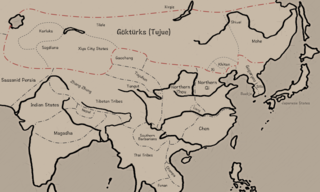 W
WThis is a timeline of the Göktürks from the origins of the Turkic Khaganate to the end of the Second Turkic Khaganate.
 W
WThe Göktürks, Celestial Turks or Blue Turks were a nomadic confederation of Turkic peoples in medieval Inner Asia. The Göktürks, under the leadership of Bumin Qaghan and his sons, succeeded the Rouran Khaganate as the main power in the region and established the Turkic Khaganate, one of several nomadic dynasties which would shape the future geolocation, culture, and dominant beliefs of Turkic peoples.
 W
WThe Later Han was founded in 947. It was the fourth of the Five Dynasties, and the third consecutive sinicized Shatuo ethnicity state, however, other sources indicate that the Later Han emperors claimed patrilineal Han Chinese ancestry. It was among the shortest-lived of all Chinese regimes, lasting for slightly under four years before it was overcome by a rebellion that resulted in the founding of the Later Zhou.
 W
WThe Ikhshidid dynasty was a mamluk dynasty who ruled Egypt and the Levant from 935 to 969. Muhammad ibn Tughj al-Ikhshid, a Turkic mamluk soldier, was appointed governor by the Abbasid Caliph Ar-Radi. The dynasty carried the Arabic title "Wāli" reflecting their position as governors on behalf of the Abbasids. The Ikhshidids came to an end when the Fatimid army conquered Fustat in 969. The Ikhshidid family tomb was in Jerusalem.
 W
WThe Javanshirs were a Turkic clan in Karabakh, who belonged to the Afshar tribe and were in turn a branch of the Oghuz Turks. Between 1748 and 1822, members of the Javanshir clan functioned as the head of the Karabakh Khanate.
 W
WThe Kara Koyunlu or Qara Qoyunlu, also called the Black Sheep Turkomans, were a Muslim Turkoman monarchy that ruled over the territory comprising present-day Azerbaijan, Georgia, Armenia, northwestern Iran, eastern Turkey, and northeastern Iraq from about 1374 to 1468.
 W
WThe Khalji or Khilji dynasty was a Turko-Afghan dynasty which ruled on the Delhi sultanate, covering large parts of the Indian subcontinent for nearly three decades between 1290 and 1320. Founded by Jalal ud din Firuz Khalji as the second dynasty to rule the Delhi Sultanate of India, it came to power through a revolution that marked the transfer of power from the monopoly of Turkish nobles to a heterogeneous Indo-Mussalman nobility. Its rule is known for conquests into present day South India and successfully fending off the repeated Mongol invasions of India.
 W
WThe Kazakh Khanate, was a successor of the Golden Horde existing from the 15th to 19th century, located roughly on the territory of the present-day Republic of Kazakhstan. From 16th to 17th century, the khanate ruled and expanded its territories to eastern Cumania, to most of Uzbekistan, Karakalpakstan and the Syr Darya river with military confrontation as far as Astrakhan and Khorasan Province, which are now in Russia and Iran, respectively. The Kazakhs invaded the Khanate of Bukhara and occupied several Uzbek cities such Bukhara, Samarkand. The Khanate also engaged in slavery and raids in its neighboring countries of Russia and Central Asia, and was later weakened by a series of Oirat and Dzungar invasions. These resulted in a decline and further disintegration into three Jüz-es, which gradually lost their sovereignty and were incorporated to the expanding Russian Empire. Its establishment marked the beginning of Kazakh statehood whose 550th anniversary was celebrated in 2015.
 W
WThe Khanate of Khiva was a Central Asian polity that existed in the historical region of Khwarezm in Central Asia from 1511 to 1920, except for a period of Afsharid occupation by Nadir Shah between 1740 and 1746. Centred in the irrigated plains of the lower Amu Darya, south of the Aral Sea, with the capital in the city of Khiva, the country was ruled by a Turco-Mongol tribe, the Khongirads, who came from Astrakhan. It covered present western Uzbekistan, southwestern Kazakhstan and much of Turkmenistan before Russian arrival at the second half of the 19th century.
 W
WThe Khanate of Kokand was an Uzbek state in Fergana Valley, Central Asia that existed from 1709–1876 within the territory of eastern Uzbekistan, modern Kyrgyzstan, eastern Tajikistan and southeastern Kazakhstan. The name of the city and the khanate may also be spelled as Khoqand in modern scholarly literature.
 W
WThe Kumul Khanate was a semi-autonomous feudal Turkic khanate within the Qing dynasty and then the Republic of China until it was abolished by Xinjiang governor Jin Shuren in 1930. The khanate was located in present-day Hami prefecture of Xinjiang.
 W
WStarting from the formation of the Kazakhs in the mid-15th century, the Kazakhs khans led both the unified Kazakh Khanate and later the three main Kazakh divisions. Khan is a title for a ruler used by nomadic and semi-nomadic groups throughout Central Asia.
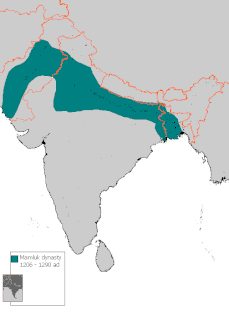 W
WThe Mamluk Dynasty was directed into Northern India by Qutb ud-Din Aibak, a Turkic Mamluk general from Central Asia. The Mamluk Dynasty ruled from 1206 to 1290; it was the first of five unrelated dynasties to rule as the Delhi Sultanate till 1526. Aibak's tenure as a Ghurid dynasty administrator lasted from 1192 to 1206, a period during which he led invasions into the Gangetic heartland of India and established control over some of the new areas.
 W
WOld Great Bulgaria or Great Bulgaria, also often known by the Latin names Magna Bulgaria and Patria Onoguria, was a 7th-century Nomadic empire formed by the Onogur Bulgars on the western Pontic–Caspian steppe. Great Bulgaria was originally centered between the Dniester and lower Volga.
 W
WThe Ottoman dynasty was made up of the members of the imperial House of Osman, also known as the Ottomans. According to Ottoman tradition, the family originated from the Kayı tribe branch of the Oghuz Turks, under Osman I in northwestern Anatolia in the district of Bilecik Söğüt. The Ottoman dynasty, named after Osman I, ruled the Ottoman Empire from c. 1299 to 1922.
 W
WThe Pechenegs or Patzinaks were a semi-nomadic Turkic people from Central Asia speaking the Pecheneg language which belonged to the Oghuz branch of the Turkic language family.
 W
WQasim Khanate or Kingdom of Qasim or Khanate of Qasım was a Tatar khanate, a vassal of Russia, which existed from 1452 until 1681 in the territory of modern Ryazan Oblast in Russia with its capital Kasimov, in the middle course of the Oka River. It was established in the lands which Grand Prince Vasily II of Moscow presented in 1452 to the Kazan prince Qasim khan, son of the first Kazan khan Olug Moxammat.
 W
WQutqashen Sultanate also known as Qabala mahaly was feudal state which existed from the middle to the end of 18th century in the north of Azerbaijan, in the territories covering the present day Qabala Rayon.
 W
WThe Salghurids of Fars, were a dynasty of Turkmen origin that ruled Fars, first as vassals of the Seljuqs then for the Khwarazm Shahs in the 13th century. The Salghurids were established by Sunqur in 1148, who had profited from the rebellions during the reign of Seljuq sultan Mas'ud b. Muhammad. Later the Salghurids were able to solidify their position in southern Persia to the point of campaigning against Kurds and involving themselves in the succession of the Kirman Seljuqs, holding Seljuq sultan Malik-Shah III's son Mahmud as a possible claimant to the Seljuq throne. They captured Isfahan in 1203-4, and later occupied Bahrain taken from the Uyunid dynasty in 1235.
 W
WThe Saltukids or Saltuqids were a dynasty ruling one of the Anatolian beyliks founded after the Battle of Manzikert (1071) and centered on Erzurum. The Saltukids ruled between 1071 and 1202. The beylik was founded by Emir Saltuk, one of the Turkmen commanders of the Great Seljuk Alp Arslan. The beylik fought frequently against the Georgian Kingdom for hegemony of the Kars region. The center of the beylik, Erzurum, was occupied by the Byzantine Empire between 1077 and 1079, and was besieged by the Georgian King Giorgi III in 1184. It comprised the entirety of present-day Erzurum and Bayburt provinces, lands east of Erzincan, most of Kars, and lands north of Ağrı and Muş provinces during its height.
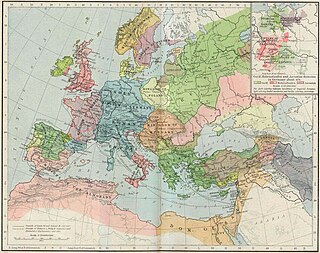 W
WThe Shah-Armens, also known as Ahlatshahs, was a 11th- and 12th-century Turcoman beylik founded after the Battle of Manzikert (1071) and centred in Ahlat on the northwestern shore of the Lake Van. This region comprised most of modern day Bitlis and Van, and parts of Batman, Muş, Siirt and Diyarbakır provinces.
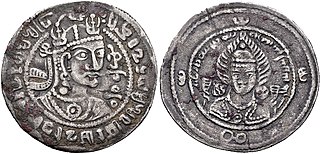 W
WShahi Tegin, Tegin Shah or Sri Shahi was a king of the Turk Shahis, a dynasty of Western Turk or mixed Western Turk-Hephthalite origin who ruled from Kabul and Kapisa to Gandhara in the 7th to 9th centuries.
 W
WThe Timurid dynasty, self-designated as Gurkani, was a Sunni Muslim dynasty or clan of Turco-Mongol origin descended from the warlord Timur. The word "Gurkani" derives from "Gurkan", a Persianized form of the Mongolian word "Kuragan" meaning "son-in-law". This was an honourific title used by the dynasty as the Timurids were in-laws of the line of Genghis Khan, founder of the Mongol Empire, as Timur had married Saray Mulk Khanum, a direct descendant of Genghis Khan. Members of the Timurid dynasty signaled the Timurid Renaissance, and they were strongly influenced by Persian culture and established two significant empires in history, the Timurid Empire (1370–1507) based in Persia and Central Asia, and the Mughal Empire (1526–1857) based in the Indian subcontinent.
 W
WThe Tughlaq dynasty also referred to as Tughluq or Tughluk dynasty, was a Muslim dynasty of Turkic origin which ruled over the Delhi sultanate in medieval India. Its reign started in 1320 in Delhi when Ghazi Malik assumed the throne under the title of Ghiyath al-Din Tughluq. The dynasty ended in 1413.
 W
WThe Tulunids, were a mamluk dynasty of Turkic origin who were the first independent dynasty to rule Egypt, as well as much of Syria, since the Ptolemaic dynasty. They remained independent from 868, when they broke away from the central authority of the Abbasid dynasty that ruled the Islamic Caliphate, until 905, when the Abbasids restored the Tulunid domains to their control.
 W
WThe Turk Shahis or Kabul Shahis were a dynasty of Khalaj Turk, or mixed Khalaj Turk-Hephthalite origin, that ruled from Kabul and Kapisa to Gandhara in the 7th to 9th centuries CE. From the 560s, the Western Turks had gradually expanded southeasterward from Transoxonia, and occupied Bactria and the Hindu-Kush region, forming largely independent polities. The Turk Shahis may have been a political extension of the neighbouring Western Turk Yabghus of Tokharistan. In the Hindu-Kush region, they replaced the Nezak Huns – the last dynasty of Bactrian rulers with origins among the Xwn (Xionite) and/or Huna peoples.
 W
WThe Uyghur Khaganate (or Uyghur Empire or Uighur Khaganate, self defined as Toquz-Oghuz country, was a Turkic empire that existed for about a century between the mid 8th and 9th centuries. They were a tribal confederation under the Orkhon Uyghur nobility, referred to by the Chinese as the Jiu Xing, a calque of the name Toquz Oghuz or Toquz Tughluq. Its capital was Ötüken and later Ordu-Baliq. It was succeeded by Yenisei Kyrgyz Khaganate.
 W
WThe Western Turkic Khaganate or Onoq Khaganate was a Turkic khaganate in Eurasia, formed as a result of the wars in the beginning of the 7th century after the split of the Turkic Khaganate into a western and an eastern Khaganate.
 W
WThe Yaglakar clan was the first imperial clan of the Uyghur Khaganate. Descendants of the Yaglakar clan would later establish the Ganzhou Uyghur Kingdom.
 W
WThe Yarkent Khanate, also known as the Yarkand Khanate and the Kashghar Khanate, was a state ruled by the Mongol descendants of Chagatai Khan, the majority of whose subjects and conquered population was Turkic in Central Asia. It was founded by Sultan Said Khan in 1514 as a western offshoot of Moghulistan, itself an eastern offshoot of the Chagatai Khanate. It was eventually conquered by the Dzungar Khanate in 1705.
 W
WThe Zengid or Zangid dynasty was a Muslim dynasty of Oghuz Turkic origin, which ruled parts of the Levant and Upper Mesopotamia on behalf of the Seljuk Empire. The dynasty was founded by Imad ad-Din Zengi.